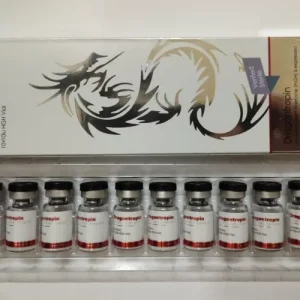Steroids
Steroid Acne in Men: Causes, Treatment, and Prevention
Naturally, about everyone has some form of acne, some small, some big. Steroid acne is a result of using anabolic steroids for a long. Or it could be your body is just sensitive to a particular compound present in anabolic steroids. First, it is essential to note that this kind of acne is very typical, only that it may appear more significant than usual. Also, keep in mind that it is no disease, just a reaction.
Steroid Acne

Usually, acne is caused by a change in hormones, which triggers the production of fat. The fat clogs the pores on the skin, resulting in a lump referred to as acne. It is unclear what causes steroid acne, but it results from individual compounds found in a particular steroid. Whether the steroids prescribes or those used in bodybuilding, steroid acne affects the skin to make someone feel uncomfortable.
Steroid acne is a skin condition seen in people with high corticosteroids circulating in their system. Anabolic steroids are known to cause severe acne, which causes inflammation and swelling of an area of the skin. While there is a high chance that acne appearing on a bodybuilder’s skin caused by steroid use, it is also worth noting that some acnes are very normal and natural. Steroid acne may be of two types.
- Acne vulgaris – this particular type of acne affects specific sites prone to acne, and the location varies from one person to the next. But the most common regions are the back, chest, and face.
- Malassezia folliculitis is a kind of steroid acne caused by yeast and bacteria found on the skin. The use of corticosteroids triggers the condition, more so those injected, ingested, or applied on the surface.
Steroid acne, somebody can manage by applying special cream with anti-inflammatory characteristics. Alternatively, one can halt the use of steroids temporarily until the concentration of acne on the skin goes down. However, in most cases, steroid acne does not prevent bodybuilder from doing regular exercises. It only becomes a problem when they expose to hot temperatures, which increases itchiness.
Types of Steroid Acne
 Steroid acne occurs in two main kinds. The most dominant is fungal acne. Also known as Malassezia folliculitis, this kind of acne is due to infection of the hair follicles. Acne Vulgaris is another type of steroid acne that affects most steroid users. It occurs whenever one uses an injected steroid, although it also occurs naturally. Steroid acne is mostly seen in adolescence but can also occur in other groups of people. It is important to note that most chemicals found in steroids are naturally occurring, and that’s why steroid acne cause in people who don’t use steroids.
Steroid acne occurs in two main kinds. The most dominant is fungal acne. Also known as Malassezia folliculitis, this kind of acne is due to infection of the hair follicles. Acne Vulgaris is another type of steroid acne that affects most steroid users. It occurs whenever one uses an injected steroid, although it also occurs naturally. Steroid acne is mostly seen in adolescence but can also occur in other groups of people. It is important to note that most chemicals found in steroids are naturally occurring, and that’s why steroid acne cause in people who don’t use steroids.
Tamanu Oil by PUR 360 >> Buy It <<
How to Identify Steroid Acne?
A bodybuilder may blame steroids for acne on their skin, yet it could just be any natural kind of acne. As mentioned earlier, steroid acne is not very different from regular acne. However, there are a few details that make steroid acne a bit different. Some outstanding features include:
- Open and closed blackheads that are usually bigger and darker than regular acne.
- Small red lumps. The lumps may increase in size, become redder, and more painful as one continues using the drug
- They may be painless in the beginning but becomes very painful when scratched or when pressure is applied.
- Inflammation of oil glands on the skin and around the hair gland area.
Must read:: 9 Causes of Gynecomastia and Man Boobs
What Causes Steroid Acne?
It knows what causes steroid acne for sure, but theories explain its origin. The proliferation of Malassezia yeast causes fungal acne. Also, It usually experiences by the bodybuilder around the chest and upper back area. Steroid acne presents itself as some itchy bumps on the skin surface. Malassezia acne induced by steroids is of the same size and appearance. All kinds of steroid acne result from inhalation, ingestion, or steroid injection into one’s system. The leading cause of steroid acne is the use of certain types of steroids, which increase the likelihood of developing the condition.
Related Article:: Steroids 101, Cycles, Dosage, and full Idiots Guide
Corticosteroids
 Corticosteroids such as prednisone are prescription steroids that usually give to people who are undergoing organ transplants. The objective is to prevent organ rejection by the person’s system. However, corticosteroids can also use for fitness purposes, specifically for bodybuilding.
Corticosteroids such as prednisone are prescription steroids that usually give to people who are undergoing organ transplants. The objective is to prevent organ rejection by the person’s system. However, corticosteroids can also use for fitness purposes, specifically for bodybuilding.
Acneblitz >> Buy it <<
The drug founds to aggravate the occurrence of acne to a higher degree. However, acne caused by this drug does not occur immediately. It saw long after someone starts using it. It also doesn’t affect people who have not used the drug for long. Steroid acne in corticosteroid users is prevalent in people under 30, but generally, it is found among all age groups that use it.
How does acne occur on steroid users exactly? Research, though not conclusive, shows that steroids trigger the production of immune system receptors. The receptors are known as TLR2 and, together with bacteria residing in the human body, cause acne in specific parts of the body. They do this by creating more oils than usual in the body, which cause clogging of pores in the back and chest regions. The closest researchers have found the cause of steroid acne, but more studies are still ongoing.
It has also revealed that acne has some inheritance characteristics. Men whose fathers have had close acne will likely have it as well. It is more of a hormonal trait and not necessarily caused by steroid use. Steroid acne is made worse by sweating. That means breakouts naturally happen when the weather is hot, and when someone is doing regular anabolic exercises. When mixed with sweat, the acne becomes very itchy and painful. Steroid acne is harder to control, unlike the one that appears on your face.
Treating Steroid Acne
First, steroid acne affects different parts of the body, namely:
- The face
- Upper back
- Chest region
 Treatment sometimes depends on the part of the body with the most outbreak. Treatment is also dependent on the kind of acne. Sometimes the acne becomes very stubborn and defies several treatment measures. Such type of acne will require more complicated medical procedures to get rid of completely. But you don’t need to go through all that trouble as the condition is not fatal.
Treatment sometimes depends on the part of the body with the most outbreak. Treatment is also dependent on the kind of acne. Sometimes the acne becomes very stubborn and defies several treatment measures. Such type of acne will require more complicated medical procedures to get rid of completely. But you don’t need to go through all that trouble as the condition is not fatal.
TreeActiv >> Buy it <<
Like any other kind of acne, Tree Active can treat Steroid acne at home if it is not causing you extreme discomfort. Medical attention becomes necessary when the condition starts becoming a serious health issue. That usually happens when you scratch or press the spot hard and leave an open won’t. The wound can get infected when you apply skin creams or when it comes into contact with any other foreign substance. While most people prefer to treat acne with antibodies, it is always good to treat it with Topicals. The following treatment strategies have been found to reduce steroid acne significantly. Sometimes the condition even disappears completely.
Related Article:: How Do You Get Rid of Steroid Acne?
Ingested Antibiotics
 Severe and moderate cases of steroid acne by taking tetracycline antibiotics orally. Oral antibiotics of this group have been found to contain chemicals that kill the bacteria that causes acne. Even if the acne doesn’t go away completely, the drugs will cure you of all inflammation. Children usually have a different prescription of oral antibiotics for the treatment of acne.
Severe and moderate cases of steroid acne by taking tetracycline antibiotics orally. Oral antibiotics of this group have been found to contain chemicals that kill the bacteria that causes acne. Even if the acne doesn’t go away completely, the drugs will cure you of all inflammation. Children usually have a different prescription of oral antibiotics for the treatment of acne.
Be informed that oral antibiotics don’t cure steroid acne overnight. It takes up to ten weeks of regularly using the drugs to see positive results. The good part is it is unlikely that the condition will come back after treatment. Your body sort of develops immunity to the disease even as you continue using steroids.
People of color most prefer antibiotics as a treatment method for steroid acne due to their effectiveness in eliminating acne scars. The reason is that that group of people are more susceptible to acne outbreak than the rest of the population.
Apple Cider Vinegar
 Made by fermenting apple cider, Apple cider can apply to where steroid acne has broken out. It kills the bacteria or fungi that are causing the condition faster than you think.
Made by fermenting apple cider, Apple cider can apply to where steroid acne has broken out. It kills the bacteria or fungi that are causing the condition faster than you think.
Apple Cider Vinegar >> Buy it <<
Apply the mixture once or twice a day for better results. The technique is purely natural and can do at the comfort of your home. Applying apple cider vinegar may only treat mild cases of steroid acne. Seek a more potent treatment if the condition is severe.
Benzoyl Peroxide
 Studies have shown that Benzoyl Peroxide is the most effective antiseptic to get rid of steroid acne. It compounds kill the bacteria that cause acne through oxidation. It is the bacteria that is responsible for inflammation and reddening of the affected area. Also, the effectiveness of Benzoyl Peroxide can enhance combining it with oral antibiotics. The treatment method works best for mild cases.
Studies have shown that Benzoyl Peroxide is the most effective antiseptic to get rid of steroid acne. It compounds kill the bacteria that cause acne through oxidation. It is the bacteria that is responsible for inflammation and reddening of the affected area. Also, the effectiveness of Benzoyl Peroxide can enhance combining it with oral antibiotics. The treatment method works best for mild cases.
Steroid acne treatment with Benzoyl Peroxide is most popular because the compound is easily accessible. You only need to pay a visit to a regular chemist or pharmacy to get it. Most manufacturers mix it with salicylic acid to make it safer to use.
DRMTLGY >> Buy it <<
You should practice caution when using the product to treat acne as it may aggravate the outbreak. There is bound to be some irritation when Benzoyl Peroxide comes into contact with the wound. You should not scratch the spot no matter how much it gets itchy. The itchy feeling will go away after some time, paving the way for the acne to heal and disappear. Acnes are not only the ones you can see. Some are too small to notice with the naked eye. Always apply the mixture to your entire, not to spots you can see only.
Phototherapy
Although this treatment method is still being studied, some people heal from steroid acne through phototherapy. The treatment involves directing light at the spot of acne.

The technique is not very popular among bodybuilders due to the long process of treatment. It is also expensive compared to other treatment methods. Besides, there may be severe side effects if the procedure is not carried out properly.
Home Treatment
Not every case of steroid acne requires the attention of the doctor. You can manage the condition just fine with a few tips. You can learn how to prepare some kinds of Topicals to use them at home. A topical that goes by the name retinoid has been found to treat mild cases. The compound is found in specific creams, gels, and lotions. It is made from vitamins and does not have any side effects.
Steroid Acne Prevention
Steroid acne is difficult to prevent unless you’re planning to halt the use of steroids entirely. But this is not an option if you’re a bodybuilder who has developed a dependence on steroids. All hope is not lost, though. We have prepared strategies for you that have a high likelihood of preventing steroid acne and reducing the symptoms' severity.
Avoid Misusing Steroids
You wonder why steroid acne does not affect everyone that is using steroids. Well, the condition is a direct result of misusing steroids. What constitutes steroid misuse? Prescribed steroids must not have treated differently from any other medication. Only take the required doses at the given intervals. Overdosing steroids will cause your body to react; steroid acne is one such reaction.
Stop using Steroids Altogether.
This is not a viable option, but you have no other choice if the condition is very severe and is life-threatening. It is up to you to decide whether to stop using a particular steroid altogether for the sake of your health. Stopping steroids' use comes with many sacrifices, especially if it can potentially lead to career loss.
Use Topicals
Topicals retinoids are not used to treat steroid acne only. They can also be used to prevent their appearance. The compound works best when combined with other dermatological products. Topicals should also be used regularly if you want to prevent acne completely.
Avoid Fatty Foods
 Acne would not form if there were no fat clogging your pores. It has been discovered that acne inflammation is a result of pressure put on the skin tissue by clogged fat on the pores. Reducing foods with a lot of fat and oil reduces the likelihood of steroid acne appearing. Or at least it will not make them big and painful. There is an anti-acne diet that you can take to reduce the likelihood of developing acne. An anti-acne diet is low in fat and rich in vitamins and minerals.
Acne would not form if there were no fat clogging your pores. It has been discovered that acne inflammation is a result of pressure put on the skin tissue by clogged fat on the pores. Reducing foods with a lot of fat and oil reduces the likelihood of steroid acne appearing. Or at least it will not make them big and painful. There is an anti-acne diet that you can take to reduce the likelihood of developing acne. An anti-acne diet is low in fat and rich in vitamins and minerals.
Common Skin Disorders Caused by Steroids in Men
Steroids work well in treating skin disorders. But the drugs may cause additional skin conditions if used for long or wrongly. Many bodybuilders have not mastered how to strike a balance to avoid exposing themselves to severe skin conditions. However, it is important to note that skin conditions could still arise even when the bodybuilder doesn’t misuse the steroids or use them for long. It all depends on how your body responds to the steroids in the first place. Besides, people have underlying conditions that may also contribute to skin disorders. Sometimes the bodybuilder gets so much affected by the condition psychologically that it starts interfering with their career. Luckily for you, we are here to offer a little help.
Steroid use is linked to several skin disorders, including cutaneous microbial proliferation. The drugs have been found to increase skin lipid levels and thus lead to clogging of pores. That is not the only disorder, though. Several studies are ongoing to determine the effect of steroids on the user's skin's bacterial microflora invasion. But first, let us see how steroids can be used to treat skin disorders.
Steroid Therapy for Skin Conditions
The body naturally produces corticosteroid hormones in the adrenal gland. The hormones have anti-inflammatory characteristics and are used by the body to manage skin disorders such as dermatitis, rash, psoriasis, itching, eczema, and more. Topical steroids, on the other hand, are human-made and trigger the production of the same hormones. That means steroids can also be used to manage the same conditions.
But as the saying goes, ‘too much of everything is poison.’ The more one uses steroids, the more the negative impacts the drugs have on the user. However, side effects like skin disorders are not reason enough to quit your bodybuilding career. Unless the condition becomes life-threatening, of course, most of these conditions can be overcome easily, sometimes without needing to see a doctor. We are going to highlight common skin disorders to look out for as you continue using topical steroids. We will also provide some remedies for the conditions to help you continue using steroids without worrying about your health too much.
Red Skin Syndrome (RSS)
Red Skin Syndrome is a condition of the skin caused by steroids for a long time. The bodybuilder’s skin turns red, becomes itchy, and develops a burning sensation. Sometimes it swells and oozes. The condition normally worsens when one stops using steroids altogether. Bodybuilders who have become addicted to steroids are at a higher risk of RSS. A bodybuilder who is normally addicted to the drugs requires more and stronger dose than the previous one to get the same results. As the user keeps increasing the dosage and making it even stronger, their skin starts changing gradually. It reaches a point when the entire skin is affected, and nothing else can be done other than seeing a doctor.
Topical steroids cannot be used to treat RSS for the simple reason that the drugs worsen the condition. If the user is addicted, counseling on stopping the addiction is the first kind of help they need. Some drugs may be used to treat individual symptoms, such as antihistamines for itchiness. Most importantly, the patient’s condition may improve greatly when given appropriate psychological and emotional support. Immunosuppressants have also been found to work on some patients, so it is an option on the table.
Eczema and Perioral Dermatitis
The two conditions involve the skin's inflammation, which may cause itching or blistering of the skin. The only difference is that eczema is caused by substances originating within the body, while substances outside the body cause dermatitis. Atopic eczema causes inflammation and a frequent flare-up of itching at various parts of the body from time to time. Contact dermatitis is caused when topical steroids come into contact with the skin and cause inflammation.
Eczema can be prevented by limiting the use of steroids, more so injected or ingested steroids. Since dermatitis is caused by topical steroids applied or sprayed on the skin, it goes away as soon as one stops using the drug.
Permanent stretch marks
Highly potent corticosteroids have been found to cause permanent stretch marks on the body of the bodybuilder. The areas most affected by the stretch marks are:
- The underarms.
- Upper inner thighs.
- Elbow and knee creases.
However, it is important to note that steroids cause not all stretch marks. Most people and teens especially experience stretch marks as a result of the thinning of the skin. Under-treated eczema has also been found to contribute to stretchmarks in bodybuilders. The only remedy to stretch marks caused by corticosteroids is to discontinue their use.
Bruising
Prolonged use of steroids causes thinning and bruising of the bodybuilder’s skin around the upper arm. Bruising is usually caused by oral steroids taken for long periods spanning years. The condition becomes severe with age, meaning youthful bodybuilders don’t experience this disorder as often. And when they experience bruising, it is normally mild and disappears on its own. Exposing your arms to direct sunlight may also aggravate the condition. Bodybuilders with this condition are advised to wear long-sleeved shirts when outdoors to avoid exposing their skin to the sun.
Bruising caused by steroid use can also be remedied by skin moisturizers and applying special cream. Compounds such as CeraVe have been found to reduce the bruising considerably. Also, apply Arnica gel to the affected part, and the bruising might just go away in a matter of days.
Discoloration
Steroids can cause a change in skin color in some people. Whether it is a prescribed steroid or the one used in bodybuilding, there is always some sort of discoloration of the skin when used for long. Skin discoloration normally happens due to another skin disorder associated with steroid use, such as eczema. Inflammation from dermatitis also changes the amount of pigmentation on the skin.
The Center of Adverse Reactions Monitoring has been receiving reports of hyperpigmentation from steroid users. The condition has since been blamed on the prolonged use of potent topical corticosteroids. Adverse discoloration of the skin can lead to all other conditions already mentioned, such as periorificial dermatitis.
Skin discoloration from steroid use is reversed by discontinuing the drugs. However, you can try using low potent corticosteroids to manage the condition.
Steroid Rosacea
Mid-face rosacea is caused by the long-term use of high potent steroids or withdrawal from their use. The condition is closely related to periorificial dermatitis, only that it is much similar to steroid-induced acne. A bodybuilder experiencing steroid rosacea will have inflammatory acne lesions that may consist of pustule papules and cysts. In more severe conditions, the patient may have motile Demodex mites from inflammatory cells.
The face is a susceptible part of the body, and only mild steroids should be applied to avoid conditions such as rosacea. Non-steroid anti-inflammatory drugs can be used to manage the condition as well.
Telangiectasias
Telangiectasias is a skin disorder characterized by visible broken blood capillaries on the skin's surface. The condition is due to the release of nitric oxide from endothelial cells. Telangiectasias induced by steroids first appear as red lines that get white when pressed. Many steroid users, however, don’t experience telangiectasias. There is no direct link between the use of steroids and telangiectasias. The condition is caused by long-term exposure to direct sunlight or high temperatures. What steroids do is aggravate the likelihood of developing the disease.
There is no known cure for telangiectasias, but bodybuilders can manage the condition in certain ways. One of the preventive measures is obvious; discontinuing the use of the drug. If the symptoms are severe, it recommends that the patient sees the doctor as soon as possible. Diagnostic tests are normally conducted, and the bodybuilder is treated based on the test results. Since telangiectasias can also be caused by underlying conditions such as eczema, the treatment may first treat the underlying condition.
Delayed Healing
Delayed wound healing is another skin condition associated with the use of steroids. Some steroids have been found to inhibit keratinocytes, thus delaying re-epithelialization. Long steroid use may also inhibit the connective tissue leading to other conditions like telangiectasias. The combined effect of these inhibitions and resulting conditions generally reduces the skin’s ability to heal faster. In such a case, the bodybuilder takes unusually long to recover from injuries.
Delayed wound healing as a result of steroid use can be managed by reducing steroid intake and frequency. The bodybuilder can also choose to pause steroids to avoid accumulating injuries that may interfere with their bodybuilding career.
Protecting Yourself from Steroid-related Skin Conditions
The best way to prevent the appearance of common skin disorders from steroids is to regulate steroid intake. That includes using for short periods as well as using products with appropriate potency. If you are not getting the results you want after using steroids for a long time, it is doubtful that you will get any results at all. It is even worse if the steroids have a huge toll on you, more so your skin, yet you have nothing to show for it. If the latter is happening to you, stop their use immediately because they aren’t doing you any good. But if they help your bodybuilding career, you can surely put up with discomfort or two of the skin. Either way, avoid prolonged use of steroids at all costs.
Amidst all the misery caused by steroid skin conditions on bodybuilders, there is a ray of hope. Studies have been ongoing to develop selective glucocorticoid receptor agonists that will pave the way for steroids' development with few to no side effects on bodybuilders.
Final Word
While most steroid-related skin conditions are not life-threatening, they may lead to more severe conditions if ignored. You know the condition is getting worse when you start experiencing unrelated symptoms. For instance, one may experience an intense headache, and a fever when there are is an acne outbreak. That is the time to consult your doctor about it. But before it gets to that, monitor closely how your body responds to steroids after every cycle. If you are using different steroids, pay close attention to the effect each of them has on you. Monitoring them in this manner makes it easy to pinpoint the steroid responsible for a specific skin disorder, and you will then discontinue the use of that particular steroid only. All in all, remember that steroids are indeed used to treat skin conditions, so they are not bad for the skin entirely.
Conclusion
Steroid acne is something you should learn to live with. The reason is simple; the benefits of using steroids, whether prescribed or for bodybuilding purposes, are more than the downsides. However, your life is not something to gamble with. If steroid acne is bothering you physically or psychologically, don’t wait until it's too late. You can always start with home remedies; if they don’t work, consider seeing a doctor. Most importantly, find alternatives that do not cause acne. Steroid acne is one condition that treats with conventional techniques with no side effects. A little bit of irritation may be all you will experience.
Steroids
Decoding IGF-1 LR3: A Guide to its Benefits
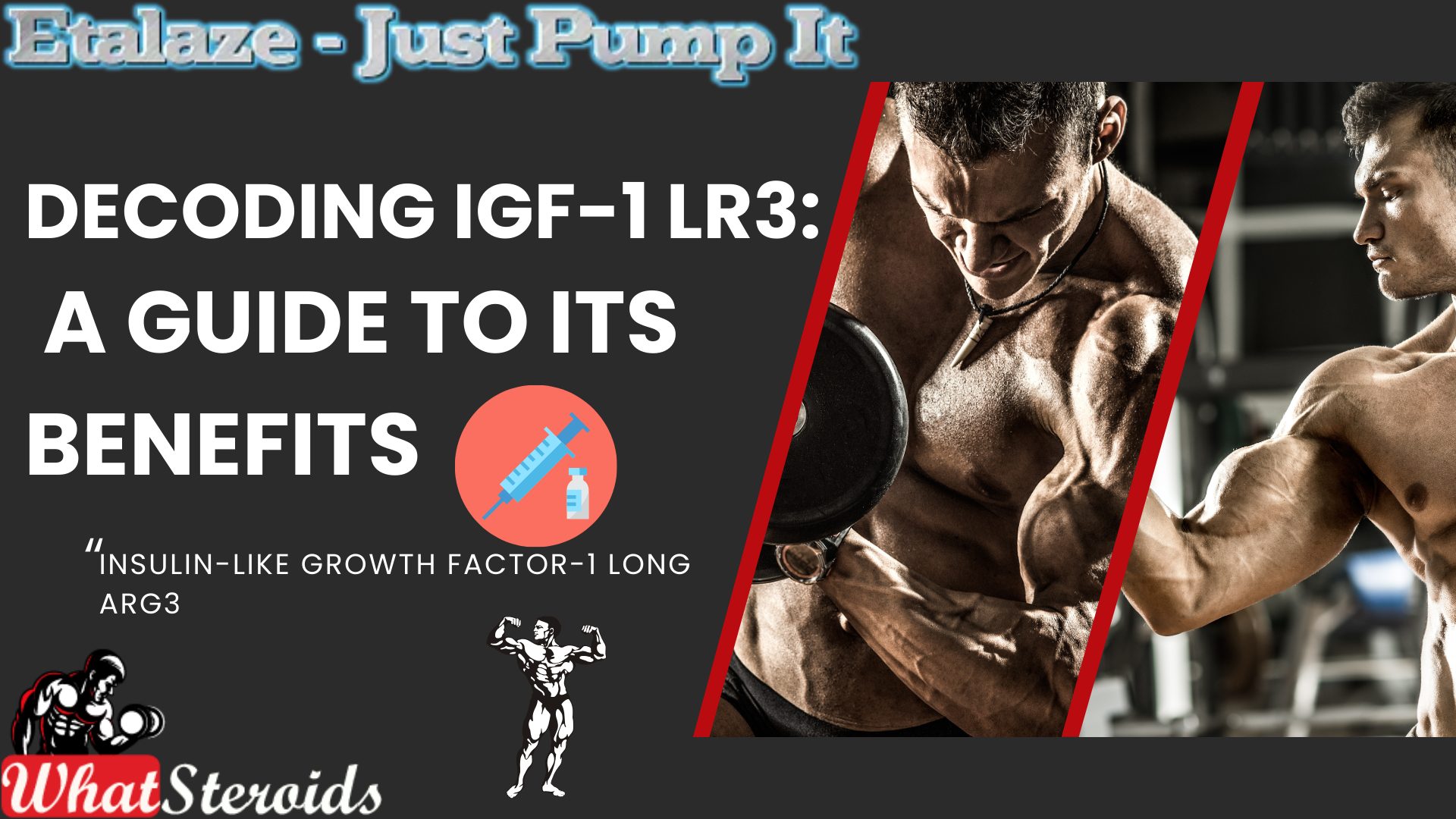
IGF-1 LR3 (Insulin-like Growth Factor-1 Long Arg3) is a synthetic variant of IGF-1, a hormone produced by the liver in response to growth hormone (GH). Unlike GH, which works indirectly, IGF-1 directly facilitates the growth and repair of muscle cells.
Related Article: Ostarine for Beginners; The Ultimate Guide
This modified version of IGF-1 is engineered to avoid binding with IGF-binding proteins, extending its half-life to 20–30 hours. As a result, it remains active in the body significantly longer than natural IGF-1.
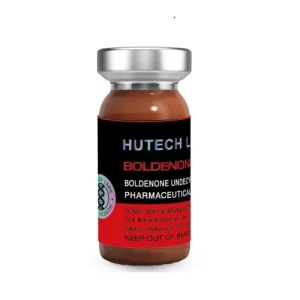 Click here to BuyBoldenone 300 by Hutech
Click here to BuyBoldenone 300 by Hutech
Many performance athletes incorporate IGF-1 LR3 post-workout to enhance muscle growth, speed up recovery, and support fat loss. When injected into specific muscle groups, it often produces localized effects. Additionally, it helps with nutrient distribution and, in some cases, improves insulin sensitivity.
On the other hand, human growth hormone (HGH) operates more broadly and indirectly, stimulating the liver to produce IGF-1 and offering more systemic benefits such as improved skin health, joint support, and fat reduction, albeit at a slower pace.
Typical IGF-1 LR3 doses range from 20–50 mcg daily, administered subcutaneously or intramuscularly, often following a workout.
Key Features of IGF-1 LR3
Enhanced Bioavailability: It avoids binding with IGF-binding proteins, increasing its potency.
Muscle Growth & Repair: Directly stimulates muscle cell proliferation and differentiation.
Improved Nutrient Distribution: Helps shuttle nutrients into muscle cells, supporting recovery.
Potential Fat Loss Benefits: Some users report improved insulin sensitivity and fat metabolism.
Mechanism of Action
IGF-1 LR3 interacts with IGF-1 receptors on muscle cells, activating pathways like PI3K-AKT and MAPK, which are crucial for cell growth and regeneration. This makes it a powerful tool for bodybuilders and athletes looking to optimize recovery and muscle development.
What Are the Top 10 Alternatives to IGF-1 LR3?
Here are some of the top alternatives to IGF-1 LR3, each with unique benefits for muscle growth, recovery, and performance:
BPC-157 – Known for its regenerative properties, it enhances healing and tissue repair.
CJC-1295 – A growth hormone-releasing peptide that boosts GH levels for muscle development.
Ipamorelin – Stimulates GH release with minimal side effects, making it a safer option.
MK-677 (Ibutamoren) – A potent GH secretagogue that promotes muscle growth and fat loss.
Sermorelin – Encourages natural GH production, supporting recovery and lean muscle gains.
Tesamorelin – Primarily used for fat loss, but also aids in muscle preservation.
Follistatin-344 – Inhibits myostatin, allowing for increased muscle hypertrophy.
PEG-MGF (Pegylated Mechano Growth Factor) – Enhances muscle repair and growth post-exercise.
GHRP-6 – Stimulates appetite and GH release, supporting muscle mass gains.
GHRP-2 – Similar to GHRP-6 but with fewer hunger-related side effects.
Each of these peptides has distinct mechanisms and benefits.
Must Read: Are Nootropics a Better Option to AAS?
Potential Risks Associated With IGF-1 LR3
IGF-1 LR3 comes with several potential risks, especially for bodybuilders using it to enhance muscle growth. Here are some key concerns:
Hypoglycemia (Low Blood Sugar) – IGF-1 LR3 increases glucose uptake in muscle cells, which can lead to dangerously low blood sugar levels if not managed properly.
Organ Growth – Since IGF-1 affects all tissues, excessive use may lead to unwanted growth in organs, increasing health risks.
Cancer Risk – IGF-1 plays a role in cell proliferation, and elevated levels have been linked to an increased risk of certain cancers.
Water Retention & Edema – Some users experience bloating and fluid retention, which can affect performance and aesthetics.
Joint Pain & Stiffness – Excessive IGF-1 levels may contribute to joint discomfort due to increased tissue growth.
Cardiovascular Issues – There is some concern that IGF-1 LR3 could contribute to heart enlargement or other cardiovascular complications.
Desensitization – Long-term use may reduce the body's natural IGF-1 production, leading to dependency
Overall
IGF-1 LR3's ability to bypass IGF-binding proteins makes it more potent but also increases the likelihood of desensitization with prolonged use. For those considering it, careful dosing and monitoring are crucial to mitigate side effects.
Steroids
AOD-9604: The Fat-Burning Peptide Explained
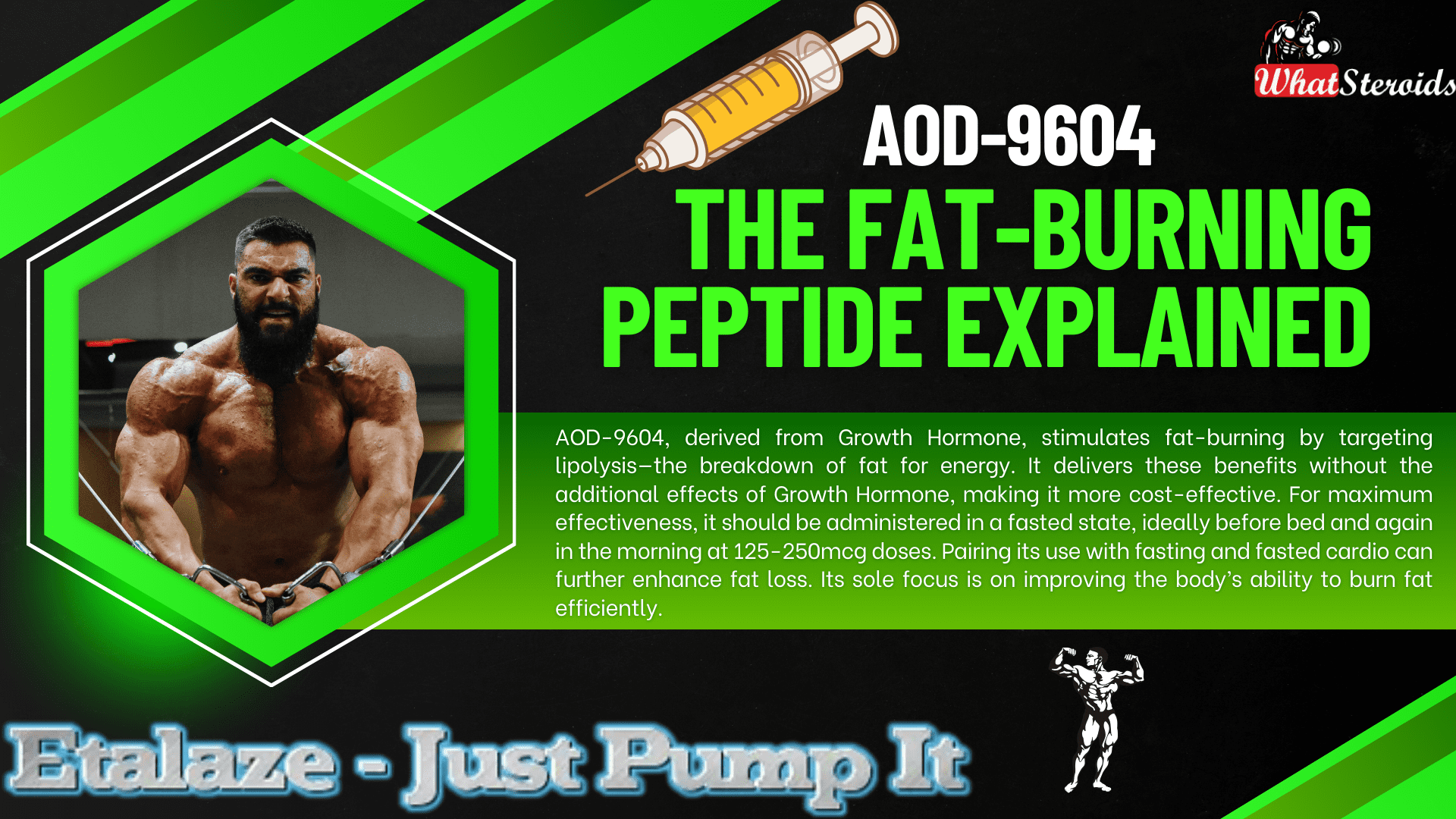
AOD-9604, along with the similar HGH Frag 176-191, is a peptide derived from Growth Hormone that includes only the amino acids in HGH responsible for stimulating fat breakdown, known as lipolysis.
This means that these peptides offer the fat-burning benefits of HGH without its other effects—whether beneficial or adverse—and come at a lower cost.
Related Article: Anavar Cycle for Men and Women
Lipolysis refers to the process where fat cells are broken down to be utilized as energy. AOD-9604 promotes accelerated fat loss by increasing the body's use of fat as fuel.
For optimal results, the peptides should be used in a fasted state. AOD-9604 and Frag 176-191 are most effective when administered at a dose of 125-250mcg before bedtime (at least 3-4 hours after eating) and in the morning at the same dose, followed by a fasting period of 3-4 hours, ideally combined with fasted cardio.
Check Out Dragontropin HGH 100 IU by Dragon Pharma
Similar Peptides with Fat-Burning Effect
Here’s a list of 10 peptides similar to AOD-9604, each with a brief description:
Ipamorelin: A growth hormone-releasing peptide (GHRP) that stimulates the natural release of growth hormone, promoting fat loss, muscle growth, and improved recovery without affecting other hormones like cortisol or prolactin.
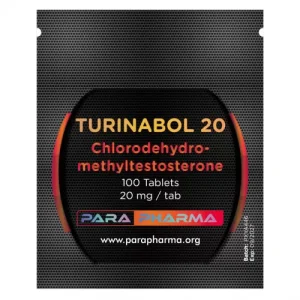 Click Here to Buy: Turinabol 20 by Para Pharma
Click Here to Buy: Turinabol 20 by Para Pharma
CJC-1295: A peptide that increases growth hormone and IGF-1 levels, aiding in fat loss, muscle gain, and improved sleep quality. It has a long half-life, making it convenient for users.
HGH Frag 176-191: A fragment of human growth hormone specifically designed for fat-burning. It targets adipose tissue without the broader effects of full-length HGH.
Tesamorelin: Known for reducing visceral fat, this peptide stimulates the release of growth hormone and is often used for weight management and metabolic health.
BPC-157: While primarily known for healing and recovery, BPC-157 can support fat loss indirectly by improving gut health and reducing inflammation.
Melanotan II: Originally developed for skin tanning, it also has appetite-suppressing properties, making it useful for weight management.
Thymosin Beta-4 (TB-500): Focused on healing and recovery, it can enhance physical performance and indirectly support fat loss through improved activity levels.
GHRP-6: A growth hormone-releasing peptide that boosts appetite and metabolism, aiding in muscle growth and fat loss.
Semaglutide: A GLP-1 receptor agonist that regulates appetite and blood sugar levels, making it effective for weight loss and metabolic health.
MK-677 (Ibutamoren): A growth hormone secretagogue that increases growth hormone and IGF-1 levels, promoting fat loss, muscle gain, and improved recovery.
List of Peptides With a Counteractive Effect Bodybuilders Must Avoid
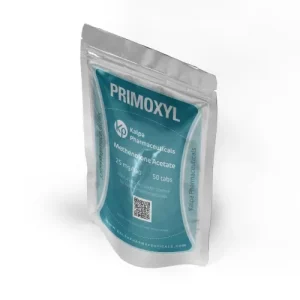 Click Here to Buy Primoxyl 25 by Kalpa Pharmaceuticals
Click Here to Buy Primoxyl 25 by Kalpa Pharmaceuticals
Some peptides can inadvertently lead to fat gain due to their effects on metabolism and appetite regulation. Here are a few that bodybuilders might want to avoid or use cautiously:
- GHRP-6 – While it stimulates growth hormone release, it also significantly increases appetite, which can lead to excess calorie consumption and fat gain.
- IGF-1 LR3 – This peptide enhances muscle growth but can also promote fat storage if not carefully managed with diet and training.
- MK-677 (Ibutamoren) – Though technically a growth hormone secretagogue rather than a peptide, it boosts GH levels but often leads to increased hunger and potential fat accumulation.
- CJC-1295 with DAC – While effective for muscle growth, its prolonged GH release can sometimes lead to unwanted fat retention if not paired with a strict diet
Overall
AOD-9604, derived from Growth Hormone, stimulates fat-burning by targeting lipolysis—the breakdown of fat for energy. It delivers these benefits without the additional effects of Growth Hormone, making it more cost-effective. For maximum effectiveness, it should be administered in a fasted state, ideally before bed and again in the morning at 125-250mcg doses. Pairing its use with fasting and fasted cardio can further enhance fat loss. Its sole focus is on improving the body’s ability to burn fat efficiently.
Read More: How Much Do You Know About B-AET? A Fat Burner You’ve Been Missing
Bodybuilding
Understanding Trenbolone-Induced Cough (“Tren Cough”)

Trenbolone, a potent anabolic steroid, can sometimes cause “tren cough”—a sudden and intense coughing episode shortly after injection. Although not exclusive to Trenbolone, it is more commonly associated with this substance due to its highly irritant nature.
 Click Here To Buy 1-Test Cyp 100 by Nakon Medical
Click Here To Buy 1-Test Cyp 100 by Nakon Medical
Mechanisms Behind Tren Cough
Solvent and Carrier Irritation
Trenbolone formulations often include volatile solvents like benzyl alcohol or benzyl benzoate, which may irritate lung tissues when absorbed quickly into systemic circulation.
Prostaglandin Release
Trenbolone promotes increased production of prostaglandins, particularly PGF2α. This compound triggers contraction in the smooth muscles of the lungs, leading to bronchoconstriction and coughing.
Micro-Oil Embolism
Tiny oil droplets from an injection can reach capillaries and travel to the lungs, causing mild embolic reactions that lead to temporary oxygen deprivation and coughing.
Histamine and Mast Cell Activation
For some individuals, Trenbolone triggers histamine release and mast cell activation, mimicking an allergic response and causing bronchospasms and cough reflexes.
Related Article: Best Syringes for Steroid Injection on Amazon
Using Salbutamol (Albuterol) to Manage Tren Cough
- Salbutamol, a widely-used β2-adrenergic receptor agonist, can alleviate tren cough symptoms by:
- Relaxing bronchial muscles, easing spasms that cause coughing.
- Inhibiting prostaglandin effects, reducing bronchoconstriction associated with PGF2α.
- Opening airways, preventing severe respiratory restrictions in susceptible individuals.
Application Methods
Inhaler (Optimal)
Take 1–2 puffs of salbutamol (100–200 mcg) 5–10 minutes before a Trenbolone injection. If coughing occurs afterward, additional puffs can swiftly resolve the issue.
Oral Tablets (Moderate)
Consuming 2–4 mg tablets 30–60 minutes before injection offers slower, longer-lasting relief but may be less effective than inhalation methods.
Nebulizer (Severe Cases)
For individuals with frequent episodes, nebulized doses of 2.5 mg salbutamol can provide substantial relief.
Preventive Measures to Reduce Tren Cough Risk
- Inject slowly to minimize systemic absorption and irritant effects.
- Split doses to lower reaction severity with smaller quantities.
- Opt for ventrogluteal injection sites, which have fewer blood vessels, reducing oil embolism risk.
- Choose lower-concentration solutions to lessen irritation, as higher concentrations (e.g., Tren Ace 200 mg/ml) are more likely to provoke reactions.
What Other Steroids Can Induce Coughing?
Here's a curated list of peptides, SARMs, and PEDs that may potentially cause coughing or respiratory irritation in bodybuilders and fitness enthusiasts:
Peptides
IGF-1 LR3 (Insulin-like Growth Factor): Known for its anabolic effects, IGF-1 LR3 can occasionally cause mild respiratory irritation due to systemic absorption.
TB-500 (Thymosin Beta-4): While rare, improper injection techniques or high doses may lead to transient coughing episodes.
GHRP-6 (Growth Hormone-Releasing Peptide): This peptide can stimulate histamine release, potentially leading to bronchospasms and coughing.
SARMs (Selective Androgen Receptor Modulators)
RAD-140: (Testolone) Some users report throat irritation or coughing, often attributed to solvents used in liquid formulations.
YK-11: Known for its myostatin-inhibiting properties, YK-11 may cause mild respiratory discomfort in sensitive individuals.
LGD-4033 (Ligandrol): Though uncommon, some users experience coughing due to carrier solvents or allergic-like reactions.
PEDs (Performance-Enhancing Drugs)
Boldenone Undecylenate (Equipoise): This injectable steroid can cause “Equipoise cough,” similar to tren cough, due to oil embolism or irritant solvents.
Testosterone Suspension: The water-based formulation may lead to coughing episodes if injected improperly or absorbed rapidly.
Nandrolone Decanoate (Deca-Durabolin): While less common, coughing can occur due to histamine release or systemic irritation.
More Tips to Minimize Coughing Risks
- Use proper injection techniques to avoid embolic reactions.
- Opt for lower-concentration solutions to reduce irritant effects.
- Consider antihistamines or bronchodilators for individuals prone to respiratory sensitivity.
Read More: Joint Stiffness: How to Manage It While on AAS
Are There Alternatives to Cough-inducing Steroids?
Here are some alternatives to cough-inducing steroids that can provide similar anabolic effects while minimizing respiratory irritation:
Peptides
IGF-1 LR3 (Insulin-like Growth Factor)
Promotes muscle growth and recovery without the irritant properties of certain steroids.
TB-500 (Thymosin Beta-4)
Enhances tissue repair and reduces inflammation, making it a safer option for recovery.
BPC-157 (Body Protection Compound)
Known for its healing properties, it supports muscle repair and joint health.
SARMs (Selective Androgen Receptor Modulators)
RAD-140 (Testolone)
Provides significant muscle-building effects with fewer systemic side effects compared to traditional steroids.
LGD-4033 (Ligandrol)
Boosts lean muscle mass and strength without the risk of respiratory irritation.
MK-677 (Ibutamoren)
Stimulates growth hormone release, aiding in muscle growth and recovery.
Natural Alternatives
Turkesterone
A plant-based ecdysteroid that supports muscle protein synthesis and recovery.
Ecdysterone
Another natural compound that mimics anabolic effects without the harsh side effects.
Creatine Monohydrate
Enhances strength and muscle mass through improved energy production during workouts.
Other Options
Human Growth Hormone (HGH)
Promotes muscle growth and fat loss, though it requires careful monitoring due to potential side effects.
Testosterone Boosters
Natural supplements like D-Aspartic Acid or Tribulus Terrestris can help optimize testosterone levels for muscle growth.
SARMs Alternatives
Legal and safer versions of SARMs are available, offering similar benefits without the risks associated with traditional SARMs.
Overall
We have explored the phenomenon of "tren cough," a sudden, intense coughing episode often caused by Trenbolone injections due to factors like solvent irritation, prostaglandin release, micro-oil embolism, or histamine activation. Preventive measures such as using salbutamol (via inhaler, oral tablets, or nebulizer), injecting slowly, splitting doses, and opting for lower-concentration solutions were highlighted.
Additionally, alternative compounds to tren cough-inducing steroids were discussed, including peptides like IGF-1 LR3 and TB-500, SARMs such as RAD-140 and LGD-4033, and natural options like Turkesterone, ecdysterone, and creatine. These alternatives provide anabolic effects while minimizing respiratory side effects. The conversation also underscored the importance of proper injection techniques and thoughtful compound selection to reduce risks.
-

 Steroids2 years ago
Steroids2 years agoShavers and Other Body Grooming Equipment for Bodybuilders In 2023
-

 Steroids2 years ago
Steroids2 years agoChatGPT and Other Avenues to Find Great Bodybuilding Coaches
-

 Steroids2 years ago
Steroids2 years agoBest Oil Recommendations Before Competition for Subtle Shimmer
-

 Steroids2 years ago
Steroids2 years agoPowerlifting Vs Power Building: Find Out the Big Difference and When to Shift Between the Two
-

 Nutrition2 years ago
Nutrition2 years agoEverything Nutritional Food: What’s Too Much Or Too Little
-

 Bodybuilding Products1 year ago
Bodybuilding Products1 year agoTelmisartan In Bodybuilding: An Expert’s Advice
-

 Bodybuilding8 months ago
Bodybuilding8 months agoPrimal Movements: Our Ultimate Guide for Maximum Results
-

 Bodybuilding1 year ago
Bodybuilding1 year agoChia Seeds in A Bodybuilder’s Diet: An Expert’s Advice
-

 Anabolic Steroids10 months ago
Anabolic Steroids10 months agoJoint Stiffness: How to Manage It While on AAS
-

 Steroids1 year ago
Steroids1 year agoAnadrol Cycle: Benefits, Doses, Alternatives, etc.
-

 Anabolic Steroids1 year ago
Anabolic Steroids1 year agoLegality of Anabolic Steroids In Latin America
-

 Beginners2 years ago
Beginners2 years agoTren Cycle for Beginners
-

 Bodybuilding9 months ago
Bodybuilding9 months agoHow Effective is Bone Broth for Recovery?
-

 Steroids10 months ago
Steroids10 months agoOmnitope (Oxytocin)
-

 Bodybuilding1 year ago
Bodybuilding1 year agoHow Much Is Too Much Cardio? Understanding Heart Rate Zones
-

 Bodybuilding1 year ago
Bodybuilding1 year agoList of FDA-Approved Peptides
-

 Steroids9 months ago
Steroids9 months agoSleeping Positions for Effective Muscle Recovery
-

 Bodybuilding2 years ago
Bodybuilding2 years agoCompetition Prep Cycle for Pro Bodybuilders
-

 Bodybuilding1 year ago
Bodybuilding1 year agoCalorie Dumping: A Bodybuilder’s Guide
-

 Bodybuilding8 months ago
Bodybuilding8 months ago2nd Edition of Natural Bodybuilding Competition Facts
-

 Bodybuilding1 year ago
Bodybuilding1 year agoDemystifying Hypertrophy Training
-

 Bodybuilding9 months ago
Bodybuilding9 months agoAre Nootropics a Better Option to AAS?
-

 Anabolic Steroids12 months ago
Anabolic Steroids12 months agoHow Much Do You Know About B-AET? A Fat Burner You’ve Been Missing
-

 Steroids4 months ago
Steroids4 months agoOstarine For Beginners: The Ultimate Guide
-

 Product Reviews12 months ago
Product Reviews12 months agoTop Vitamins for Skin Health








